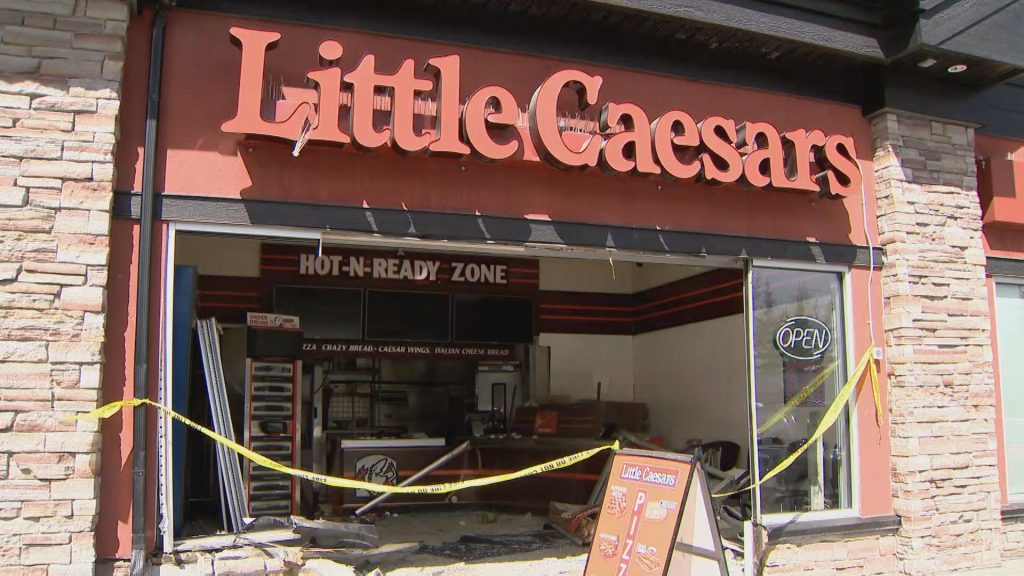Delaware museum uncovers artwork by ‘hidden gem’ Jack Lewis
Posted Sep 19, 2020 7:00 am.
Last Updated Sep 19, 2020 7:14 am.
DOVER, Del. — Taylor Collins got the surprise of a lifetime early in her artistic career.
While looking at art books at the Dover Public Library back in the mid-70s, she came across works by famed Delaware artist Jack Lewis.
“I loved what he did. He had the painting and then he told a story about the scene. The whole thing with the Delaware scene just really appealed to me,” she said.
“The books were in the Delaware reference section. You had to get a key and they would unlock the case. It’s not like today. But I assumed he had died way back in the 50s and 60s or something. One of his books had an introduction by N.C. Wyeth.”
Although thinking he was no longer around, she came to think of Mr. Lewis as a mentor for her own work. So it came as quite a shock to her when reading in the Delaware State News a few years later that he was giving a workshop at the Rehoboth Art League.
“I said ‘Oh my gosh.’ I almost fainted,” Ms. Collins said with a laugh.
“Here’s this person that you really idolized and all of a sudden you find that he’s still among the living.”
Thus began a 20-year education and friendship with the renowned painter until his death in 2012 at the age of 99.
“He was a real gem. There was no one like him,” said Ms. Collins, the owner of Parke Green Galleries in downtown Dover..
The Biggs Museum of American Art in Dover is currently featuring over 50 paintings by Mr. Lewis in an exhibit appropriately called “Delaware’s Hidden Gem.”
The exhibition is a rare look at Mr. Lewis’s work from private collections. The core of the exhibition is drawn from gifts given to the Biggs Museum and the Rehoboth Art League from area collectors such as Paul Baker and Sam Profetta. The other half of this exhibition was curated from private collections throughout Kent and Sussex counties.
The works were selected to highlight areas in the Mid-Atlantic Region — most from the Delmarva Peninsula — and to demonstrate the range of Mr. Lewis’ artistic career from his early years on the peninsula in the 1930s to works he completed in the late 1980s. As often as possible, the original Lewis painting drawn from this 50-year period is compared to photographs of the same areas as they appear today.
The Biggs is also offering a driving tour available to download featuring some of Mr. Lewis’ favourite places to paint and the venues he painted.
Born in Baltimore in 1912, Mr. Lewis moved to Delaware in the 1930s to record the labours of the Civilian Conservation Corps — a federal program to employ workers during the Great Depression. He painted the daily activities of three CCC camps doing mosquito control in Lewes, Magnolia and Leipsic.
Every day he would pick a destination and drive until he found a scene that would cause him to stop and make a plein air painting from the side of the road.
He enlisted in the U.S. Army Corps of Engineers in 1942 and was sent to the Pacific. Upon his return, he earned a master’s degree and began teaching. He worked in public schools and Delaware Technical Community College from 1949 to 1976.
After retiring, he taught in many venues in the community, including the Delaware Correctional Center, the Dover Art League and the Rehoboth Art League.
In 1986, Mr. Lewis was commissioned by Delaware’s Legislative Council to create murals celebrating the bicentennial of Delaware’s ratification of the Constitution. The murals still hang in Legislative Hall in Dover.
Mr. Lewis moved to Maine with his wife in the 1990s to be closer to his daughters. But well into his 90s, he made the trek by himself from Maine to exhibit his work at the Rehoboth Art League Outdoor Show each August.
Ms. Collins said she always appreciated the “earthiness of Mr. Lewis’ work.
“What he really captured lies in what he called the elementals, which are the people of the earth. How they make their living from the land and how they lived on the land and heat and that’s what I wanted to capture in my work. I wanted to be able to tell Delaware’s folk history and not the fancy DuPont history or that kind of thing, but just the regular little events and things that Delaware people like,” she said.
“Because we’re just never going to be New York City. We just aren’t. And so that’s one of the things that really attracted me to him was he just had this earthiness to him.”
Working for the USDA for 30 years, Ms. Collins would take off mornings and drive down to Rehoboth to take classes from Mr. Lewis.
“I had always wanted to be an artist but I was just doing the pen and ink stuff and making these into prints. So when I took the class with Jack, it was watercolour, which I knew nothing about,” she said.
“I knew I could pick his brain. He had written all these books. He was so engaging. He was just this true gentleman but so quirky. He wore a beret. He was an artist’s artist.”
Ms. Collins is in the process of writing a book about the value of mentoring in art and highlighting Mr. Lewis’ influence on her and her career.
“He actually taught you how to be an artist, which isn’t something that is really taught. He just gave you this mindset of you live the role. It’s more like it’s not a profession. It’s a way of living. And he personified it.’ she said.
“That’s so different than learning how to put paint on a piece of paper. He was such a philosopher. He would get off on these tangents. He was always going off on the deep end on some subject. I loved that because I’m a talker and anybody who digresses like that, I just love. So he was the perfect person to learn from. But he was just a gem. He was so open and warm. I can’t ever say enough about him as a person and as an artist. He was just wonderful. He just always had time for you.”
Ms. Collins said he put her in the proper mindset of being an artist.
“It’s just different being an artist. If you’re going to be an artist, you’ve got to be that artist and it really changes your whole outlook. I was always self conscious and worried like, ‘Oh, is somebody’s going to like it or are the not gonna like it?” she said.
“What he taught you was you don’t care whether somebody accepts you or not. It’s about the work, What he really liked about me is I had something to say. Because so many artists, they just want to paint a flower. They want to paint a lighthouse or they want to paint whatever. But they don’t ever really have anything they want to say. They don’t have that artistic passion. And he knew my whole goal was to capture the Delaware scene on my own, the folk art scene. And he really admired that.”
Ms. Collins fondly recalls the trips they would take to the National Gallery of Art in Washington after each session was over.
“We would all pile in his van and go analyze paintings from real masters. You can’t get that from books. You need to see the paintings in person. I always looked forward to going over there just to do the critiques and figure out how they painted the paintings and all that,” she said.
After he left Delaware with his wife Dorothy to be closer to family in Maine, Ms. Collins still saw him a handful of times.
“I always said Dorothy kidnapped him to Maine. But I did get to see him about five times in Maine. When I worked for the government, we had some training up in New Hampshire every other year. And so every time I went to Manchester, I would scoot over to Maine and see him. I did get to see him right before he died.”
Ms. Collins recalled that final time that she and her sister went to visit Mr. Lewis in a retirement community. At 99 years old, she figured it would be the last time she would see him and she was worried about what kind of shape he would be in. When they arrived, she was told he was in the dining hall.
“When we walked in, he was in there by himself playing ‘Lady of Spain’ on the harmonica. We immediately knew it was him,” she said.
“He was in a sports jacket dressed for dinner. It was such a relief that he was OK. I was dreading the visit but it was great. Although when we got in the car, we bawled our eyes out. It was so emotional. I knew I was never going to get back up there.”
Ms. Collins did have one regret about the visit.
“He loved doing jigsaw puzzles. The last time I was at his house he must have had 500 jigsaw puzzles stacked up. I bought him this 2,000-piece puzzle of a Monet painting. I don’t remember which one. He loved all of impressionists. I figured ‘This will keep him busy for a while.’ But I forgot it and just figured I would mail it to him about a week before his birthday,” she said.
“Then I found out he died and I was so sad. I had already wrapped it to go to the post office.”
Mr. Lewis died Aug. 19, 2012, 11 days shy of his 100th birthday. The jigsaw puzzle remains in Ms. Collins’ house — still wrapped.
“It’s around here somewhere. I don’t have the heart to open it,” she said.
This period piece is of Cooch’s Bridge in New Castle County. The 1986 work is an acrylic on sheetrock.
The Jack Lewis exhibit runs at the Biggs until Nov. 22. Social distancing rules and mask wearing are in effect.
Craig Horleman, Delaware State News, The Associated Press










